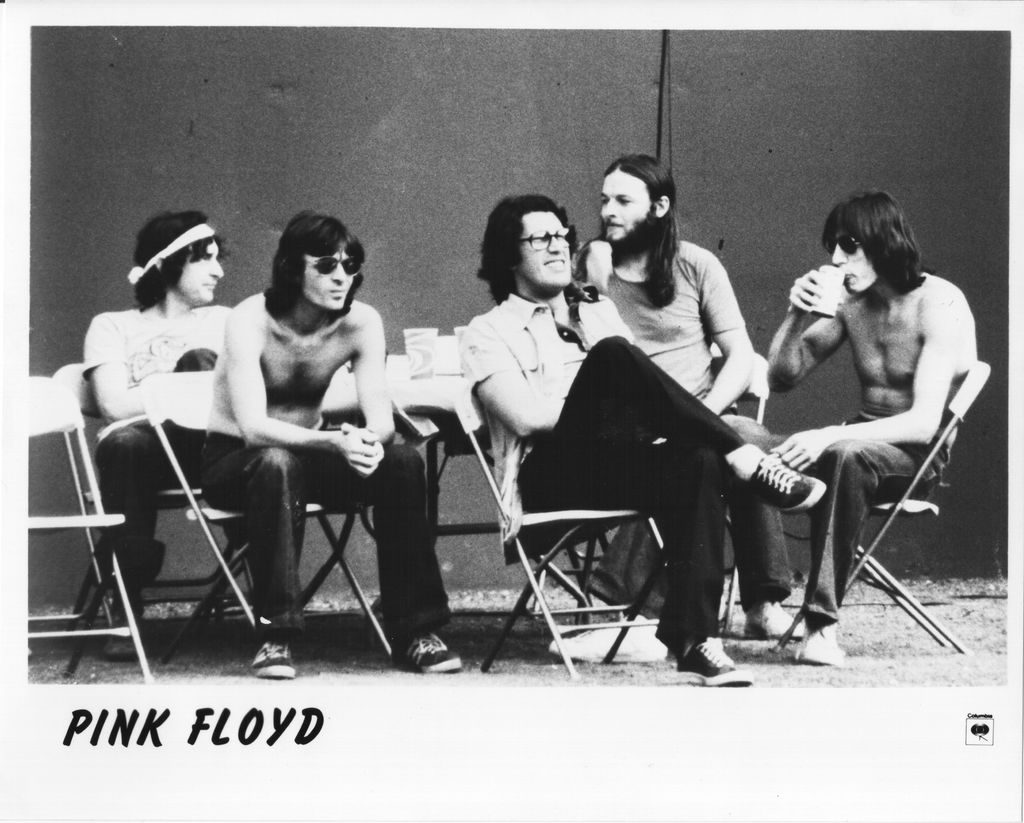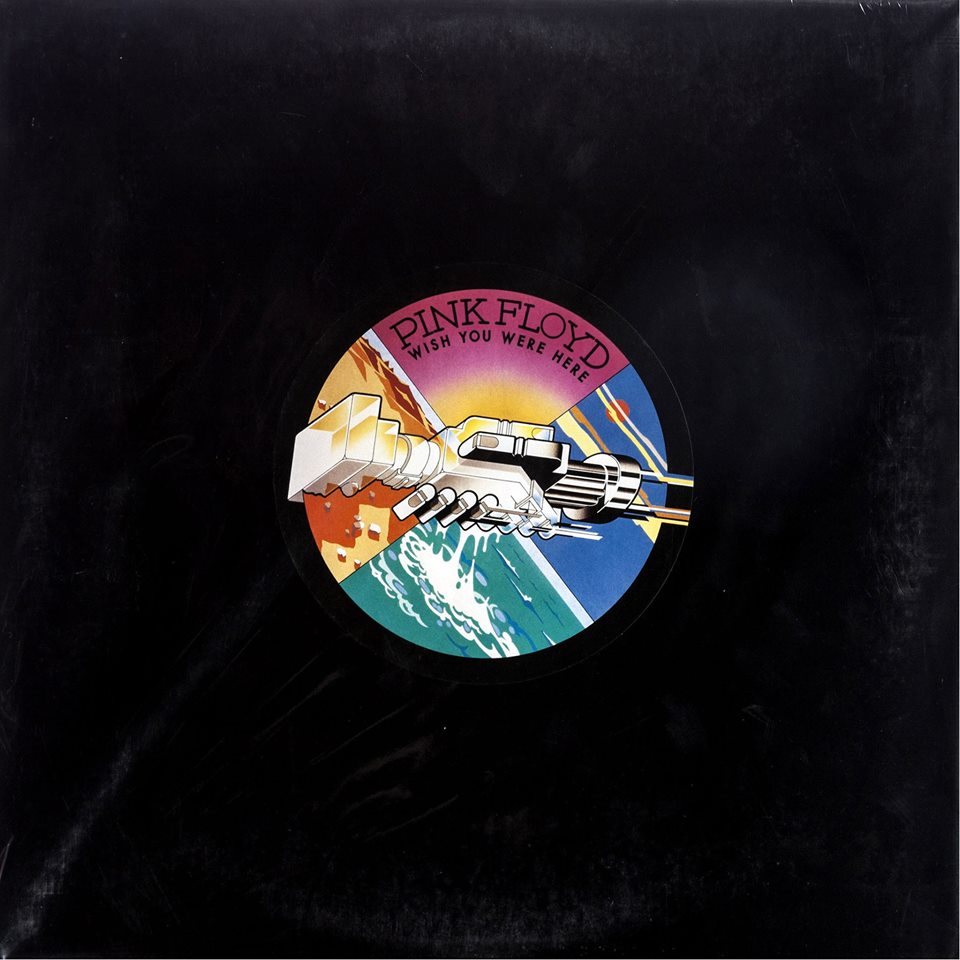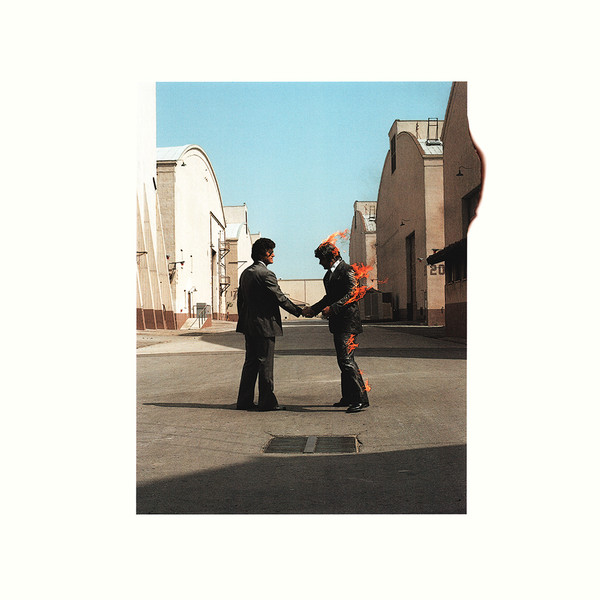
For all the success they were experiencing at the time, Pink Floyd entered 1975 in a haze of uncertainty. Their seminal Dark Side of the Moon continued moving copies in large numbers after nearly two years, as it would do for years to come, spending 741 consecutive weeks on Billboard’s LPs and Tapes chart en route to becoming what has been claimed as the third best-selling album in history. Yet as the album grew into legend and debates how it synchronized with The Wizard of Oz seeped into music lore, the band struggled to take its next step.
Dark Side brought with it new stresses: the then-quartet had been successful before its release, but never on the scale that record represented. Group relations were fraying and would continue to do so to varying degrees until Roger Waters declared the band finished in 1985. Pink Floyd was struggling with their place in the music industry, and when 1975 rolled around, the band poured those doubts, problems and fears into a new album. The result, Wish You Were Here, is a triumph of atmosphere, a record that is entrancing without being particularly pleasant.
In 1974 concerts, the English group had worked out material intended for its next record, and brought three songs to Abbey Road Studios with the plan to use them as the foundation of a new collection. Instead, two of the songs were punted (“Raving and Drooling” and “You Gotta Be Crazy,” which would eventually transform into “Sheep” and “Dogs,” respectively, on 1977’s Animals), and the band was left with just one. Given that the song would become the album’s largest set piece, it wasn’t a complete disaster, but building the rest of the record would prove to be a chore, spread over seven months’ worth of recording sessions (which began on Jan. 6, 1975, with two brief road trips in the middle) before completion.
Listen to “Shine On You Crazy Diamond” from Wish You Were Here
Whether the album shows the stresses of sessions Waters would later call “torturous” is debatable, but there’s certainly tension there. The subject matter leaves room for little else, covering a dark rainbow of loss, loneliness and frustration. “Welcome to the Machine” oozes angst on numerous levels. Intently cold and impersonal as it grinds out a channel-switching synth pulse and buzzers at its head, it features a vocal from guitarist David Gilmour that stresses imbalance, bristling with discomfort. Despite Gilmour’s restrained strumming acting as a sort of sonic salve, nothing reassures, and the whole is prickly and mechanical, up to Richard Wright’s arch, spacey synth lines that swell at the end of each passage. Even the end is unsatisfying, as the song evaporates with a jarring transition to the sounds of a party, so there isn’t even a feeling of resolution.
And yet, the song is hypnotic. Richly decorated and meticulously crafted, it is a master class in mood building, utilizing a wide spectrum of sonic tools. It’s a howl of discontent, unpleasant in every way except as an overall listening experience, which is the only one that matters. That quality is in many ways emblematic of the entire album, which leapt to the top of the album charts in several countries, including the U.S.

Somewhat more upbeat is the cohesive musical array of “Have a Cigar,” which presents itself as the set’s most straightforward song in a hearty swirl of guitar, synth, drums and bass. Although Waters would later express regret at not singing it himself, the guest appearance of Roy Harper for its vocal is absolutely right for the song, selling the juicy snark of the sycophantic record executive captured in the lyric: “The band is just fantastic/That is really what I think/Oh by the way/Which one’s Pink?” Dense and coherent, it’s a to-the-point interlude from a group more often happy to wander, though its somewhat jittery structure pushes a restlessness of thought. Gilmour’s guitar in the song’s latter portions sets up one of the greatest segues ever created, sharpening up until it reaches a gusting whoosh that transforms what’s left to a faded mono.
Listen to “Have a Cigar” from the album
That distant, tinny meander lasts for about a minute on the right side of the mix, and when a fresh Gilmour acoustic line leaps out of the left speaker, it is memorably jarring, a pleasant push into the easygoing melancholy of “Wish You Were Here.” Drummer Nick Mason coolly fills the arrangement alongside Wright’s unhurried piano, and Gilmour sells the song vocally with agreeable wistfulness. It’s a riveting portrait of loneliness, pained but catchy.
The album’s tone is set, and eventually paid off, by the one song left standing from the original plan at the start of sessions. “Shine on You Crazy Diamond” is a nine-piece suite that the band has claimed isn’t specifically about founding member Syd Barrett (whose troubled behavior led to his ejection in 1968), but certainly evokes him generally. The song’s journey—more than 26 minutes split into the first and last portions of the record—is exploratory and meditative, music for people interested in losing themselves in their headphones (and/or any substances they deem appropriate).
Wright does most of the work with a synthesizer at the outset, establishing shimmering drama. Gilmour’s guitar joins comfortably and shifts to a dark, ringing electric line a couple of minutes later, as Mason’s drums and Waters’ bass thicken its palette. By the time Waters’ measured-yet-urgent vocal begins just shy of nine minutes in, the song’s cycle has long since set its hook. Though the texture changes later in the overall suite (including a somewhat out-of-nowhere Dick Parry saxophone line that forms a coda to Part V), Waters’ vocal is the last essential piece in the band’s puzzle, capping a remarkable feat of cohesion in an ambitious structure. For all the sweat it took to deliver the record, when the pieces came together, its results were impeccable.

Wish You Were Here was released on Sept. 12, 1975, the album cover wrapped in opaque black plastic. On their Facebook page, Pink Floyd also noted about the album packaging: “As a (fairly reluctant) concession to the record company and retailers, a sticker—designed by Hipgnosis artist George Hardie—was added to the cover, depicting the elements and including the artist and title, alongside the handshake.”
On Oct. 4 of that year, WYWH accomplished something that it’s even more successful 1973 predecessor, DSOTM, never achieved: it reached #1 on the British sales chart.
More than 45 years after its debut (with six million copies sold in the U.S. out of a reported 13 million worldwide), the album remains a landmark of art rock, still certain to reward the patient listener.
Bonus video: Watch Roger Waters perform “Welcome to the Machine” during his 2017 tour
Related: Review of Roger Waters in concert, 2017


3 Comments
Pink Floyd knocked it out of the park with this one. Before this album, I’d never heard of Roy Harper, who has since become one of my favorite singer/songwriters. I don’t know why Waters later wished he’d sung the “Have a Cigar” vocals instead of Roy, but Roy made the “sycophantic” record executive’s remarks all the more powerful.
On Led Zeppelin III from 1970 there’s a song called Hats off to Roy Harper
This is a wonderful piece, Mr. Kintner. Thank you.